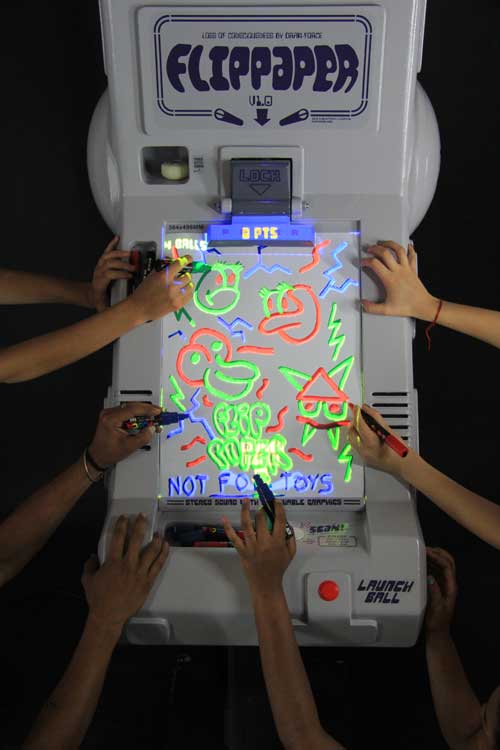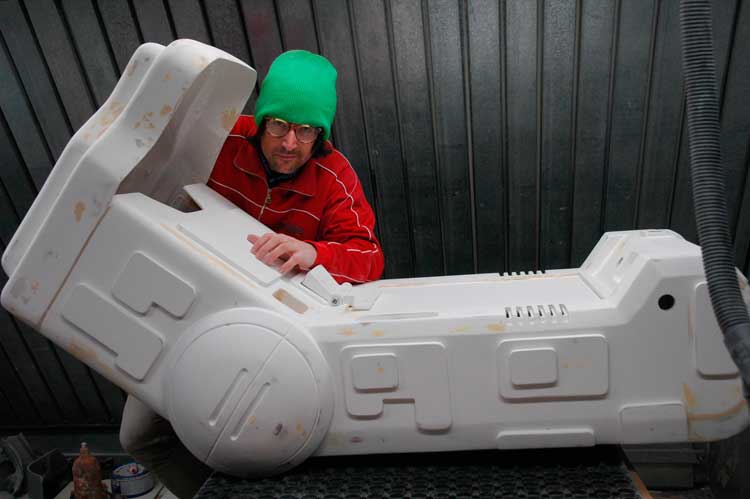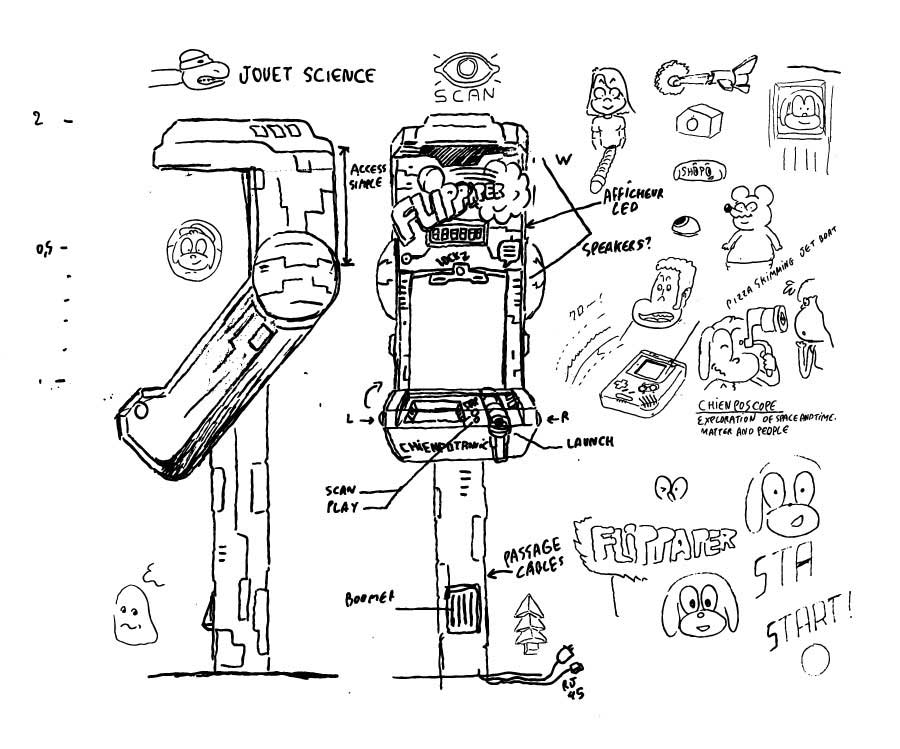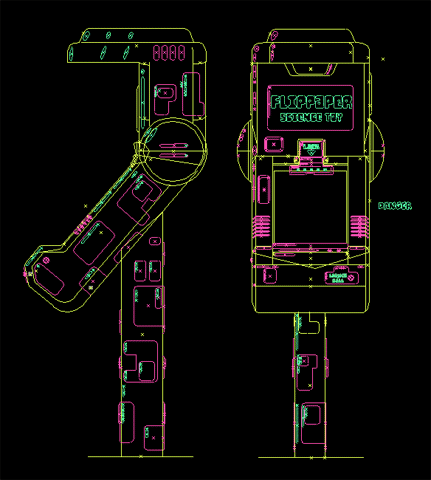Flippaper draws the game of the future
Published 19 October 2015 by Annick Rivoire
Drawing is playing: “Flippaper” is the prototype of a good old-fashioned pinball machine onto which you can graft a drawing. Once scanned, it becomes the table for the ball. Conceived by Jérémie Cortial and Roman Miletitch, it is currently being exhibited at the Numok digital festival in the libraries of Paris.

Regressive or futuristic? Flippaper is a pinball machine that you play before drawing. Regressive, for the not necessarily guilty pleasure of playing good old-fashioned pinball, the electronic game that to some extent paved the way to video games (first in the arcade, whose interface was the ancestor of video games on Playstation and other Xboxes of the time). Futuristic, for the way it combines physical drawing (with big red, green and blue markers) with the itinerary of the ball on the screen.

Flippaper has already made about a dozen appearances, “in various states”, laughs Jérémie Cortial, one of the designers of this interface combining collective gameplay and drawing. Since its very first prototype in 2013 up to the current version, recently presented at Point éphémère in Paris for the deviant comics festival Formula Bula, and spotlighted this week at Italie library for Numok festival in Paris, Flippaper has broken out of its retrogeek DIY box.

By now Flippaper is almost clean, with its hull encased in metal, wood and polyester putty (all sanded by hand). Both hardware and software have been fine-tuned to maximize functionality (it works with drawing, from rough scribbles to real illustrations). The drawing is scanned by a mirror at the top of the cabinet, so that the PC inside the box can instantly convert the colors to their respective functions: green for “speed”, red for “bump” and blue for “wall”. The program was written in C++ by Roman Miletitch.
But while Flippaper‘s slick design may impress, it remains a unique prototype. Its appearances in events and festivals give it some visibility, even if it’s always considered offbeat, not really about comics in a drawing festival, nor can it quite be labeled artwork or video game…
Jérémie Cortial, 37, French artist, co-founder of the silkscreen collective Elshopo, and Roman Miletitch, 29, Belgian researcher in artificial intelligence, found a common ground to develop this project midway between drawing and game, analogue and digital, art and design, and succeeded in making Flippaper a perfectly friendly and playful tool, which appeals to children, pinball nostalgics and video game fans.


The installation’s apparent simplicity is the fruit of two years of work. Players first draw on a big piece of paper where the screen usually is with three big green, red and blue markers. Press “scan” and instantly play your own game. Superposed over the sketch, the ball bounces, disappears or speeds up according to the lines it hits. “Depending on the drawing, you can create a more or less complex language and program a real gameplay that isn’t just magic and gadget,” says Jérémie.
7000-euro prototype
The prototype was financed by institutions (Scan, which supports digital arts in the Rhône-Alpes region) avant-garde art centers and festivals such as Retro (no) future games festival (in Cergy-Pontoise in October 2013) and Eniarof, the deviant funfair (Aix-en-Provence, November 2013). It costed “about 7000 euros” says Jérémie, thinking aloud (but the time investment of its two creators is not part of the equation…).
The two designers are far from finished with Flippaper. “The program is always changing, so we’d like to make the supplementary layer of programming accessible in Processing [a programming language that is more ‘accessible’ than C++], in order to open it up to other developers,” Jérémie continues, “for other software applications, not necessarily pinball, workshops… And why not an SDK so that anyone can have their own app?”
Flippaper in Paris, October 21, Bibliothèque Italie, Numok festival, 2:30pm-5:30pm (free) and October 31 at Kultur’Mix festival in Dijon
